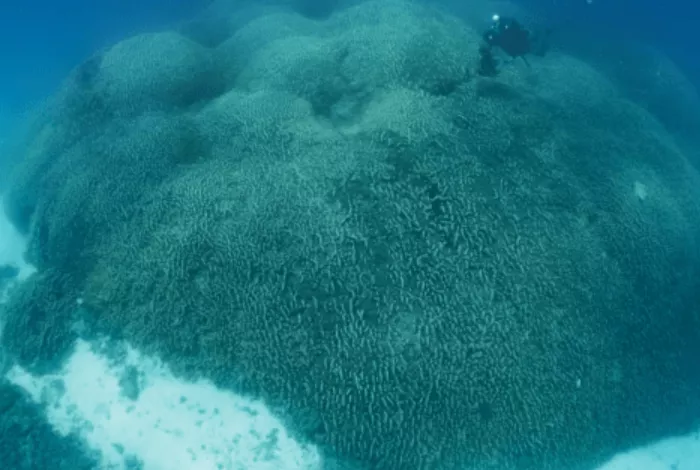In a groundbreaking discovery, scientists from National Geographic unveiled the world’s largest coral head off the coast of the Solomon Islands in October. Dubbed “Big Momma,” this enormous coral measures 111 feet in width, 104 feet in length, and stands 18 feet tall—surpassing the size of the blue whale, the largest animal on Earth. Estimates suggest the coral has been growing for at least 300 years.
The Solomon Islands, an archipelago located northeast of Australia, is home to over 490 species of coral. The newly discovered coral, a species known as Pavona clavus, or shoulder blade coral, is distinguished by its column-like structures resembling human shoulders, according to lead scientist Molly Timmers of the Pristine Seas expedition.
Comprising nearly a billion identical polyps, Big Momma forms a vast colony that functions as a single organism. Timmers highlighted that this coral is the largest of its kind ever documented. In fact, the team nearly overlooked it, mistaking it for a shipwreck when first spotted from the surface.
“It looked like a huge scoop of ice cream plopped down on the reef,” Timmers explained. “But this newly discovered coral is like the ice cream starting to melt, spreading endlessly along the seafloor.”
Although the coral is currently in excellent health, scientists are concerned about its future. With the Earth experiencing its fourth global coral bleaching event—triggered by rising sea temperatures—mass bleaching has been reported in at least 62 countries from 2023 into early 2024. This has raised alarms about the long-term survival of coral ecosystems worldwide.
Related topics:
- Stanley Black & Decker to Host 2024 Capital Markets Day
- Sierra Kerr Triumphs at Taiwan Open, Extends Winning Streak
- Gilmore and Picklum Join Rip Curl GromSearch Finals in Bali

